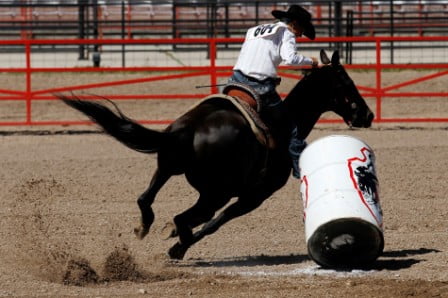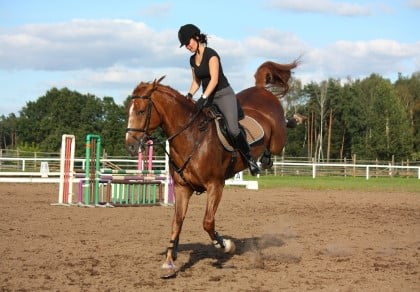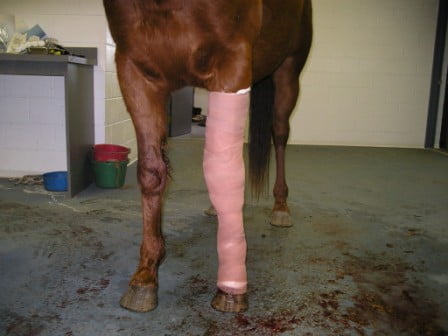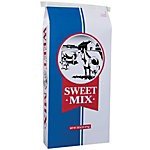PART 1 OF A SERIES
How many times do you wish your horse would just chill out?
You are out on a nice trail ride, everyone else is walking and there you are bobbing up and down holding your horse back with a tight rein because he won’t relax. At the end of the ride you are both tired and sore.
Perhaps you are going to your first horse show, maybe it’s your second or third and your horse is great at home but when you get to the show he falls apart. He jogs at home and trots like a hunter at the show. He has the perfect lope at home and wants to gallop like a racehorse at the show.

Then there’s the barrel racer who just fires too hard, he goes flying past the barrel causing you to yank on his mouth. Your runs aren’t smooth and you are losing time. Your 2D horse is out of the money.
Hunters have a reputation for requiring excessive longeing to get them quiet to make the perfect picture for hunter judges. You worry about the wear on tear on your horses joints after daily workouts plus 40 minutes of longeing.


This list goes on and on, the roping horse shoots past the calf. The gaited horse gets tense and loses his stride and head shake in competition. The pony hunter that is perfect at home becomes too much horse for his young rider at the show. The endurance horse can’t relax at check stations and loses points for pulse and respiratory rates that are too high.
The race horse “washes out” after saddling and has nothing left for the race.
There are many other times when calming agents have a place. The injured horse on a lay-up needs to be hand walked. Instead he is acting like a rodeo bronc endangering his delicate surgical repair. The horse that is on stall rest with a wound repair and wearing bandages and he keeps circling the stall doing exactly what you did not want him to do.
The mare with a sick foal who needs to calm down and not risk injury to her foal.

The horse that is being trailered, having his feet trimmed or shod. The horse that is needle shy and afraid of vaccinations. The nervous horse in training that is taking most of his lessons trying to come back to planet earth.
What can you do as a horse owner to help your horse?
The answer is you have a lot of options.
The first step in controlling your horses’ behavior is controlling his diet and exercise.
Horses are a lot like children. If you feed horses sugars and carbohydrates in excess they may act like primates at the zoo. Sweet feed with added molasses is a recipe for a hot horse. Look for feeds that are low in sugars and carbohydrates and high in fat.
Fat provides energy without foolish behavior. Most horses will act their best if fed on free choice hay or pasture with only enough grain to keep them in top condition.

Just like children if you keep the kids in the house on a rainy day the incidence of bad behavior goes up by the minute. Horses need exercise to vent and release energy just like children.
But if you are doing all of these things and you still have an unmanageable horse what can you do?
There are 6 basic categories of calming substances for horses.
- Minerals
- Vitamins
- Amino Acids
- Herbs
- Milk Hydrolysates
- Drugs
Let’s look at specific minerals that have been shown to have a calming effect.
Magnesium (Mg)
Magnesium is an essential macromineral. Magnesium is involved in numerous functions in the body. Magnesium is one of the major minerals in bone. Up to 60% of the body’s magnesium is found in the skeleton. Magnesium is involved in over 300 enzyme reactions, including the generation of cellular energy and decoding of genetic information. It works in concert with calcium in nerve transmission and muscle contraction.
The body attempts to maintain a balance of magnesium inside and outside cells. There is actually very little magnesium found in the extracellular fluid (about 1%), which is why testing blood for magnesium deficiency is relatively inaccurate. Gross deficiency of magnesium could be life-threatening but is rarely seen in horses.
Magnesium is found in varying quantities in forages and grains. Concentrate feeds may or may not have additional magnesium. The amount of indigestible fiber and presence of oxalates will affect availability of magnesium in the forages.
Supplemental magnesium can be either inorganic (magnesium sulfate or magnesium oxide) or organic (chelated magnesium). Magnesium oxide is perhaps the most commonly used source and has an approximate 50% absorption rate. The advantage of magnesium oxide is that the body will not absorb it if there is no deficiency, so it is difficult to overdose a horse on it. Magnesium sulfate (Epsom salt) is also highly available to the horse for absorption, but it also has an effect of drawing water into the bowel and causing diarrhea, so it is not recommended for daily use.
Within the muscle, calcium and magnesium work antagonistically, calcium causing muscle contraction and magnesium inducing relaxation. If there is not enough magnesium, muscles tend to spasm.
Magnesium is found in calming supplements because of its role in both nerve excitability and muscle contraction, and the suspicion that nervousness may be caused by suboptimal levels of magnesium in the diet.
Just as calcium and magnesium have a balancing act within the body, so should it be in the diet. The two minerals are ideally kept within a ratio of 2.5:1 to 3:1, calcium to magnesium. The typical diet of the horse will usually fall into a suitable range of calcium and magnesium; if supplementation with magnesium is warranted, the amount of calcium in the diet should be considered.
Calcium (Ca)
Calcium is also an essential macromineral. Like magnesium, calcium is stored in large quantities in the bones. To understand how calcium and magnesium work we need to look at the drama occurring in the cells of the body.
There are four biologically active cations. These are sodium (Na+), Potassium (K+), Magnesium (Mg++) and Calcium (Ca++). In nerve cells, electrical potentials are produced by creating different concentrations of these ions inside and outside the cell. The cell works hard to keep calcium and sodium out of the cell and keep potassium in the cell. Magnesium levels inside and outside the cells remain very similar.
The calcium, sodium and potassium differentials are maintained by active calcium, sodium and potassium channels in the cell membranes. These are complex, largely protein structures that actively transport the ions from one side of the cell membranes to another
In the resting state of a nerve axon the extracellular fluid is low in K+ and high in Na+. The reverse is true of the intracellular fluid. These gradients cause a positive charge outside the cell and negative charge inside. When the nerve impulse passes down the cell membrane sodium and potassium channels move their ions through the membrane, momentarily reversing the action potential which proceeds as a pulse down the axon.
Ca++ ions are the only ions capable of acting as secondary messengers in a cell. This means that they can take the external message from a hormone, neurotransmitter, odor, light or other primary stimulant and taking that message inside the cell. One way it does this is by affecting the amount that potassium channels open. In the presence of Ca ++ some potassium ions are far more permeable. In this way Ca++ acts as a switch in the nerve cell action potential process. Without calcium the nerve impulse cannot be properly generated.
Nerve cells talk to each other chemically rather than electrically. The chemicals that pass between them are called neurotransmitters. The release of neurotransmitters (exocytosis) is controlled by Ca++ ions as is the absorption by the receiving cell (endocytosis). Other chemical messengers such as hormones are also controlled by Ca++ ions in the same way
Magnesium is not involved in impulse transmission – because there is no concentration gradient across the cell membranes. And it is not directly involved in exocytosis or endocytosis either. However a rise in serum magnesium levels can block the effect of calcium ions and thus cause the inhibition of acetylcholine release from motor nerve terminals.
In other words magnesium, in excess can act as a sedative.
Serious complications can occur when calcium, potassium, magnesium and sodium get out of balance. Consider endurance horses who after going 20-25 miles arrive at a check station in Synchronous Diaphragmatic Flutter or Thumps. The horse has been exercising and sweating for many miles. In the process he depletes his body stores of potassium. In Thumps, depletion of intracellular potassium ions causes calcium ions to leak into the cell to replace them. This causes the nerves to short circuit with the adjacent nerves. In horses the nerve to the heart and the diaphragm run together for a while and this error causes the diaphragm to beat at the same rate as the heart. The treatment for Thumps is an intravenous drip of calcium.
It is difficult to overstate the role of calcium in nerve (and muscle) function because it operates and controls the system at so many levels. However calcium only has a positive effect on brain function.
Calcium calms by improving brain function not by sedation.
The symptoms of calcium deficiency depend upon the length of the deficiency and the severity. If you have chronic (long term) deficiency there will be changes in the bones which become brittle and either break or deform. If the deficiency is acute (sudden) the nerves and muscles are affected first. Clinical signs include muscle tremors, tetany, seizures, rapid heart beat and arrhythmias. Severe hypocalcemia is fatal if not treated.
By know you are probably saying Holy Cow Dr. Cook! I really didn’t want a nutrition lesson today! The important message is that when you have a horse that is not behaving properly the first step is to look at the horses’ diet!
That’s all for now! In part 2 we’ll look and Vitamins and Amino Acids and how they act as calming ingredients.
